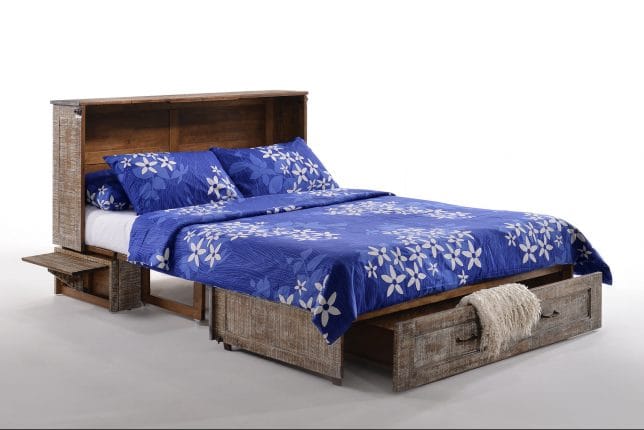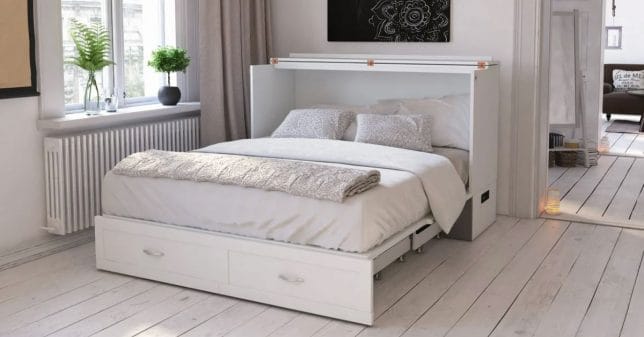Other Furniture
- What is a finger joint in wood?
- How do I level furniture?
- How do you make sure the captain’s bed with pull-out drawers is square?
- What is a Murphy Bed? Is it comfortable?
- What are the mattress options for cabinet beds?
What is a finger joint in wood?
Finger joints are used to join pieces of wood to form pieces of greater length. The joint comprises several meshing wedges or “fingers” of wood in two adjacent pieces and is held together with structural adhesives. Fingers are cut into pieces of lumber to be joined.

Is finger-jointed wood strong?
Increased efficiency: the finger jointing process is efficient and cost-effective, making it possible to produce longer and stronger pieces of wood while using less raw material.
Is finger-jointed lumber better than solid wood?
Finger-joined lumber is less prone to warping than solid-sawn lumber. The finger joining process also reduces or removes strength-reducing defects, producing a structural wood product with less variable engineering properties than solid-sawn dimensional lumber.
Is the finger joint solid wood?
Finger-jointed timber is a type of wood process made by joining pieces of wood together to form a longer piece or large volume of a desired length. The pieces are cut at an angle, creating finger-like projections that interlock with each other. The joints are then glued to create a solid, seamless piece of wood.
How do I level furniture?
Leveling furniture is crucial to achieving accurate horizontal and vertical alignment, ensuring proper leveling and precise alignment for the drawers. There are a few options when it comes to making your furniture level.
Adjustable Furniture
- Check the Level. Use a bubble level to identify the slope.
- Access Adjustable Parts. Remove drawers or open compartments to locate leveling slots or adjustable legs.
- Adjust Height. Use a leveler wrench or a flathead screwdriver to turn the leveling mechanism.
- Twist Adjustable Feet. Rotate the pads on the bottom of the legs by hand to raise or lower the furniture.
Installing Adjustable Feet
- Measure the Gap. Identify the short leg and measure the gap to the floor.
- Prepare to Drill. Wear safety gear and drill pilot holes in each leg.
- Insert Brass Components. Thread brass inserts into the holes.
- Attach Elevator Bolts. Screw in elevator bolts, adjust for height and stick felt pads on the bottom to protect floors.
Using Shims
- Determine the Slope. Place a bubble level on top of the furniture.
- Insert Shims. Slide shims under the furniture’s base where needed.
- Adjust and Trim. Stack shims for extra height and trim excess material for a neat finish.
- Alternative Leveling. Use items like cardboard or newspaper if shims aren’t available.
By following these steps, you can easily level your furniture and keep it stable.
How do you make sure the captain’s bed with pull-out drawers is square?
To make sure your captain’s bed with pull-out drawers is square, you can follow these steps:
Use a Carpenter’s Square
Place a carpenter’s square at each corner to check if they form perfect right angles. This is one of the quickest ways to ensure the frame is square.
Measure Diagonals
Measure the distance between opposite corners (diagonal measurements) of the bed frame.
If the frame is square, these diagonal measurements should be equal. If they’re not, gently adjust the frame by pushing or pulling one side until the diagonals match.
Check Drawer Alignment
Ensure that the pull-out drawers slide in and out smoothly and align evenly within the bed frame.
If the drawers are uneven, it might indicate that the frame is not square, or the drawer rails may need adjustment.
Secure Frame Corners
After confirming the frame is square, secure all bolts, screws, or fasteners at the corners.
Tighten everything carefully, as loose fasteners can cause the bed frame to shift out of square over time.
Level the Bed
Use a level to make sure the bed is even horizontally. An uneven bed could lead to alignment issues and affect squareness, especially over time.
These steps should help you verify and adjust the squareness of your captain’s bed frame and keep the drawers aligned and functional.
What is a Murphy Bed? Is it comfortable?
The Murphy bed is named after its inventor, William L. Murphy. In the early 20th century, Murphy created a bed that could fold neatly into a closet, inspired by the lack of space in his small San Francisco studio apartment. While there may be some alternative stories behind its creation, it is widely known as the Murphy bed. Murphy went on to establish the Murphy Wall Bed Company in 1911.
Are Murphy Beds safe?
In over a hundred years of existence, there have been only a few cases of Murphy beds causing injury or harm. Most of these incidents occurred during the early years of the bed’s creation. Modern-day Murphy beds have stringent safety mechanisms in place and undergo rigorous testing to meet regulatory bedding and consumer safety standards. It’s important to note that the risk of injury from a Murphy bed is extremely low compared to everyday furniture accidents.
How comfortable is a Murphy Bed?
The comfort level of a Murphy Bed largely depends on the mattress you choose. Since most Murphy beds do not come with a mattress, you have the flexibility to select one that suits your comfort and support needs. You can use a standard conventional mattress with a Murphy bed, making it quite comfortable when paired with the right mattress.
Anything else I should know before buying a Murphy bed?
Before purchasing a Murphy bed, it’s essential to measure your space to ensure it fits both in the open and closed positions. Additionally, measure your doorways and entryways to ensure smooth delivery and installation. Most Murphy beds are custom-made and arrive partially assembled in one or two large pieces.
There are two major types of Murphy beds to consider: wall-mounted and freestanding. Wall-mounted Murphy beds require anchoring to the wall and involve a more intensive installation process but offer greater stability. On the other hand, freestanding Murphy beds do not require wall anchoring and are more suitable for those who may need to move or relocate in the future, such as renters in large cities.
If you have any further questions or need assistance in selecting the right Murphy bed for your needs, feel free to reach out to us. We’re here to help!
What are the mattress options for cabinet beds?
All cabinet beds are sold with 6-inch tri-fold mattresses that can be folded and stored inside the cabinet. The storage space would not fit a thicker mattress. Here is a breakdown of the mattress options by the manufacturer.
AFI Furnishings, Arason, and CabinetBed cabinet beds come standard with a plain memory foam mattress. Cabinet beds from Night & Day Furniture and IQ Furniture come standard with a gel memory foam mattress.


